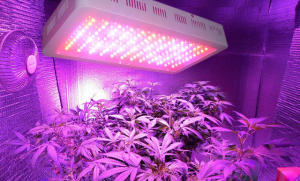Light-emitting diode or LED technology in residential lighting is a raging success today! Simply put, it is a two-lead semiconductor, based on SSL (solid state lighting) technology. Rather than producing light from the gas/vacuum or even conventional incandescent/ fluorescent bulbs, the SSL technology produces light from a semiconductor.
If truth be told, LED lighting technology has been prevalent for years. It is only today that people are using it extensively in their residential spaces. Today, there’s increased use of cost-efficient residential applications such as LED light bulbs, flashlights, and digital clocks, car lighting etc. If you want to upgrade your car’s lighting system to LED, visit https://www.redlinemodshop.com/. Here you can find premium ambient car lighting kits, underglow lights, starlight headliners, footwell lights, interior and exterior led lights for cars, car door lights, trunk lights, and many other fiber optic ambient car lights.
Owing to it’s mass acceptance and significant enhancements, LED today is a popular choice for residential lighting purposes. This technology has a promising future and is giving rise to many exciting trends. Here are the best ten we can discuss.
Best ten trends of LED lighting technology
1. Excellent connectivity
Since LED lighting is gaining center stage in residential lighting, the next apparent development is controls. You can call it being connected or smart, as you like it. But the crux of the matter is that today you have the chance to control your lights. Sensors and dimmers have been present for eons now. However, the challenge today is to make them a new age and revolutionary. The attempt is to make these devices and applications communicate with other types of equipment, ensuring people use the same. Connected LED lighting technology paves the path for a better and safe future.
2. The internet of things
The term “internet of things” can be used to denote a state of life when there is more than just Smartphone’s and computers connected to the web. In addition to that, there is your refrigerator, the heart monitor and even the LED lighting system in your residence. Lighting happens to be the best network for the internet-of-things solutions to get developed. It is because the technology is already present in the ceiling of almost every building, staring down at its residents, wired up and ready to be developed more. Include a data connection, cameras, and sensors are what you need to add on.
3. Advanced and revolutionary power technologies
Till such time, the LED luminaries have usually been present with a “driver” that shifts the primary electricity supply to a form that the light can use. However, today advanced power technologies are emerging. It comes with a host of advantages. In the recent times, the best innovation is power-over-Ethernet that offers electricity through the data cables. That is not all. Today, there are service providers, classified as a Residential LED Fixture Company, that are introducing lead light and vintage led fixtures. You can browse the internet to research and know more on them to stay updated on LED lighting technology and its uses.
4. Development of the in-built light resources
Wondering if that is a good idea? Let us understand this. The LED lighting sources do not need to be frequently substituted. Also, there are no criteria in the way they should be created. Hence, the manufacturers have started to customize them into fittings, instead of designing fresh luminaries close to the replaceable lamps. It is essential to think about what will happen when it fails early on. Or just in case there is a better and much more effective module that makes it to the market. Today, many LED lighting solution providers have addressed this concern by introducing agreed designs. However, the integrated led fixtures and similar modules are becoming popular gradually.
5. There are zero wires
Being wireless is the central theme of an updated, urban, new age lifestyle! The same is applicable for lighting controls as well. It is significant for the retrofit projects. It is also appropriate for radio-oriented frequency systems, such as the power-line communications that makes use of power lines to carry data from your fittings. Also for the conventional wired control systems, it will be common for today’s user’s control equipment to be a Smartphone or tablet that is wireless.
6. The era of retrofit lamps
Time Magazine had claimed 2013 as the year for LED lights. It sure did seem a reasonably long time ago. But the trend has been catching up ever since then. Also, different manufacturers started to wonder what would happen the moment the demand for durable lamps gets saturated. Two trends can follow. First, it can shift upmarket by adding in value concerning color-changing, data connectivity to this product. Second, it might walk away from the market entirely. Most LED light technology leaders have opted in for the first trend and have been surviving well.
7. A healthy lighting
Many people find it tough to believe, but the light has an impact on the way people feel productive at work. It also impacts how fast individuals heal from their illness and also how fast employees absorb the guidelines for a new project. Hence, the predominance of LED lighting technology and products indicates that it is getting cheaper and more comfortable for lighting manufacturers to use this know-how into practice. They can come up with LED light bulbs and tubes that promote health. You can do it by making adjustments in the color and brightness during daytime to induce a natural light ambiance.
8. Innovative and ground-breaking materials
It is interesting to note that Shuji Nakamura, a Nobel Prize winner has shifted to violet LED from blue. His violet LED technology placed gallium nitride as a base to more gallium nitride instead of sapphire. It makes colors appear better. And surprisingly it also creates scope for higher efficiency and longer life. There is a new material that will revolutionize the LED space completely. It is graphene, which is new age material manufacturers are mulling over to use in the future. University of Manchester researchers’ is of the opinion that this new material provides high conductivity. It will pave the path for durable, brighter and more effective lighting sources. Furthermore, we can also expect the grapheme LED lamp making it to the market fast.
9. The shift to high quality
At the beginning of LED lighting technology, we all have come across LED retrofits of questionable quality. It made houses, cafe and shops appear unappealing. And all this was done to be able to save energy. However, today the LED lighting space is getting modified. Today, the manufacturers are making quality their primary objective. They are striving to attain a perfect balance of look, utility, and durability in LED lighting products.
10. Going beyond light
Strange enough lightning is not just about light anymore. Today, it is also about data. It is time for new age technologies like Li-Fi (same as Wi-Fi, but using light) along with indoor positioning, which traces an individual’s positioning making use of Smartphone’s and LED luminaries, depending on visible light interaction. This technology is here to transform indoor spaces as well as shops and museums. The lighting products today are acquiring a new dimension.
Benefits of LED lighting technology
Today, customers are switching to LED lighting technology and products at an increased pace. This shift is what propels the various trends surrounding the technology. Some of the best benefits of LED technology and products are as follows:
- Minimized power consumption: In comparison to traditional mainstream lighting solutions, LED applications to result in 80% to 85% savings.
- Minimizes the overall cost of ownership: LED applications to result in decreased long-term outright ownership costs along with reduced initial system outlay. It is more so when it is used as a substitute light supply making use of minimized voltage mains power.
- Less heat output: The increased LED functioning temperatures are generally 45°C instead of 300° and 450°C, functioning temperatures of traditional lighting solution. It minimizes heat pollution that provides savings.
- Minimized carbon emissions: The LED lighting systems are eco-friendly. Apart from the massive minimization in the usage of traditionally generated energy, zero harmful elements are used in component manufacture, for instance, mercury or any other polluting gases.
- The quality of light: The LED “white” light-quality gets customized in a way that it caters to the human eye requirements. It soothes the eye reducing all eye strain that can otherwise hurt the eye health in specific living environments. LED light products don’t emit UV light and its variants. And interestingly, it can also be matched perfectly with particular color rending index.
- Shock resistance: In comparison to the traditional light sources, the LED light products are not susceptible to abrupt burnouts or failures. It is because there are not any filaments to break or utterly burn out. The light in LED-based bulbs and tubes get produced from the encapsulated silicon diodes, which in turn gets immersed in the phosphor. It is energized using a very minimal voltage input.
Furthermore, the LED lighting technology has also contributed to reduced light pollution. No light gets wasted which is very much the case in conventional lighting. The traditional light sources are usually omnidirectional right from the tubes and bulbs. Hence, the new age LED lighting technology with its integrated, vintage and other various LED fixtures are here to stay, giving rise to more advanced trends in the forthcoming days.








